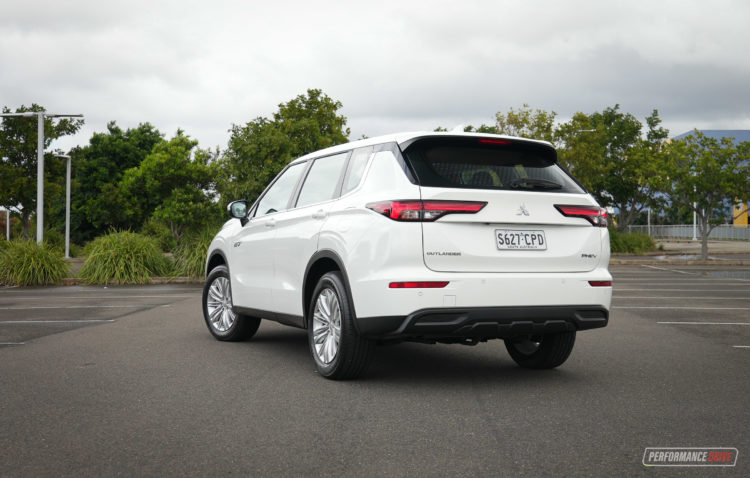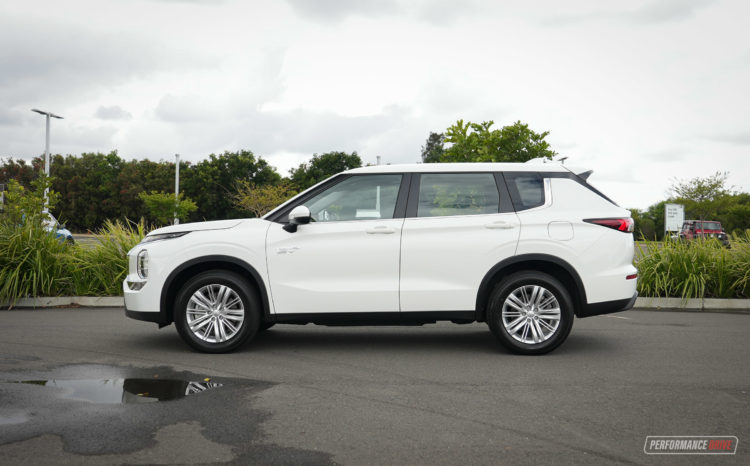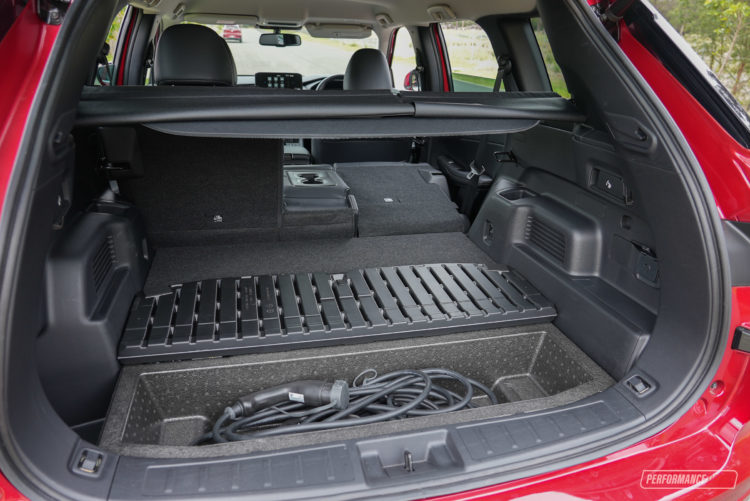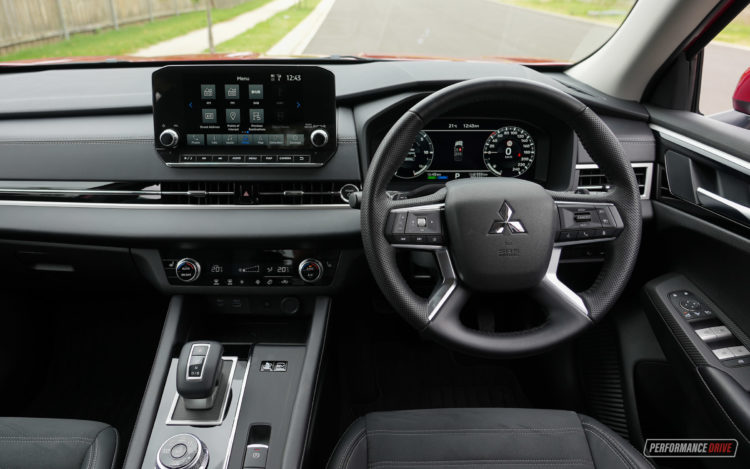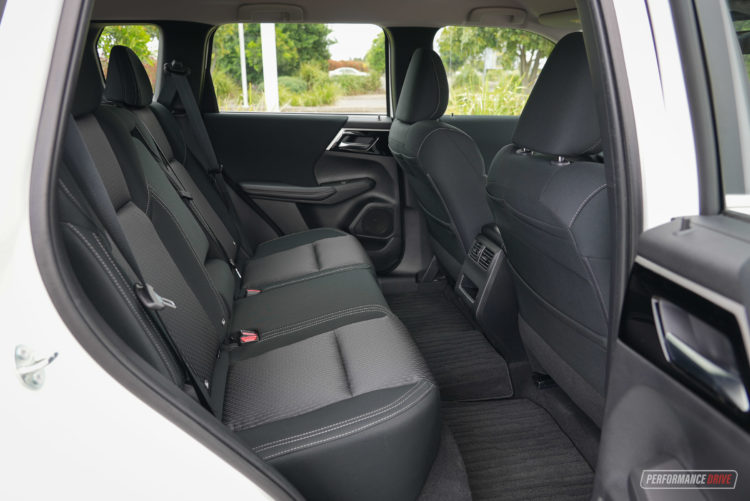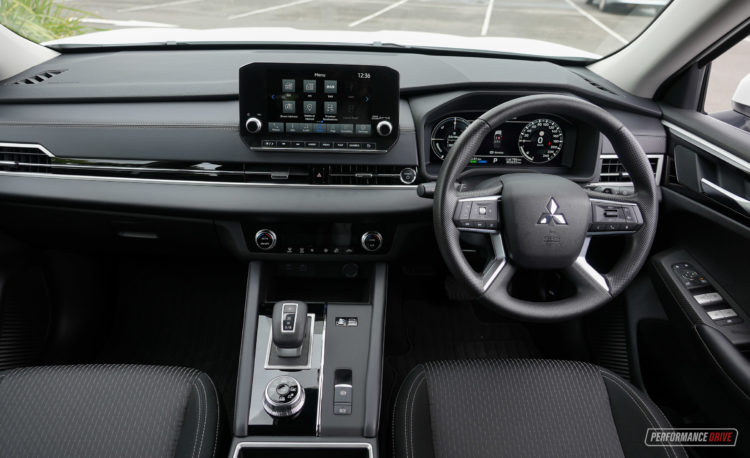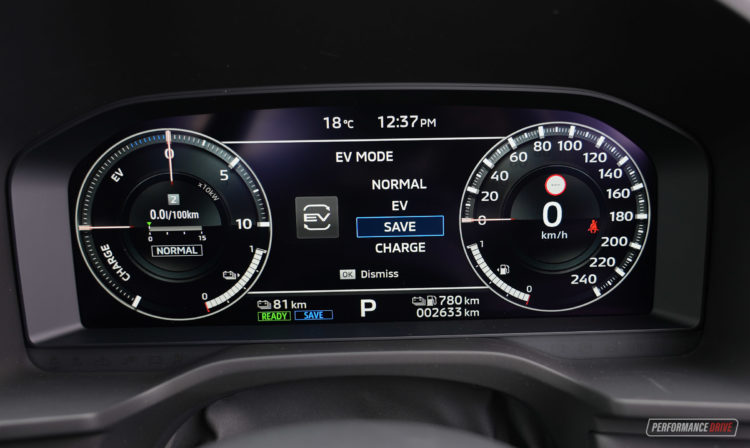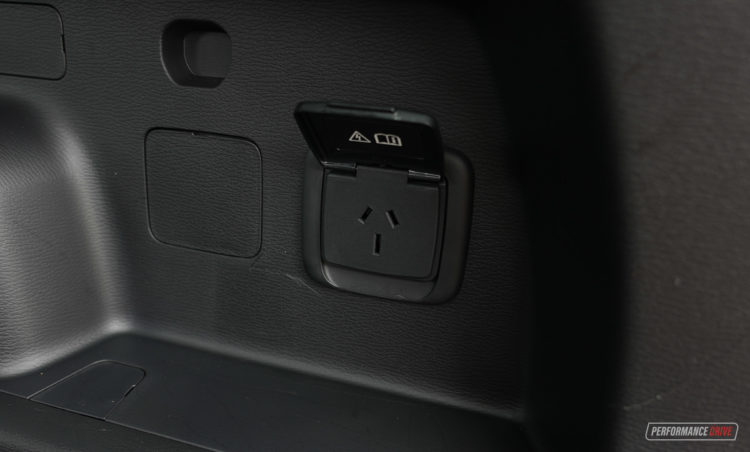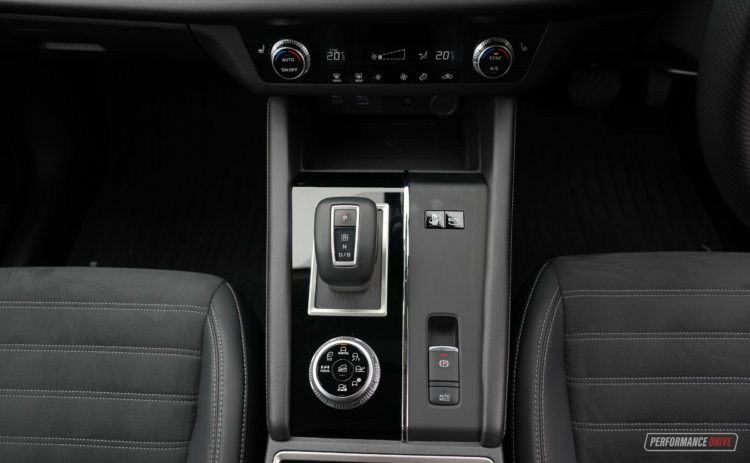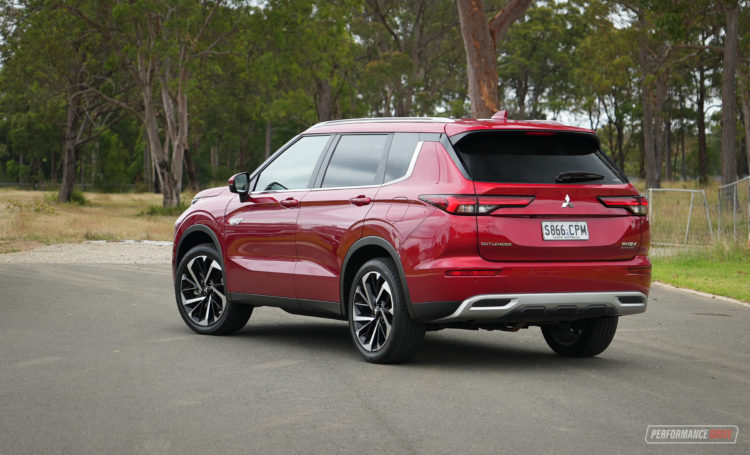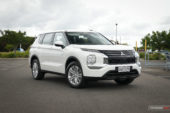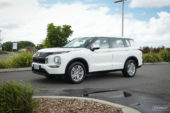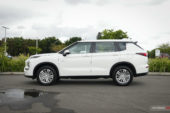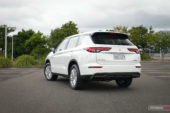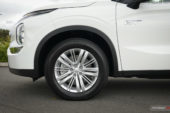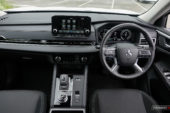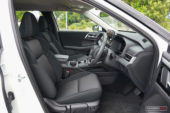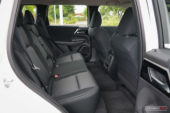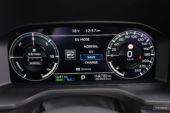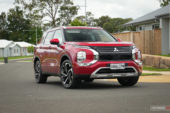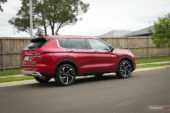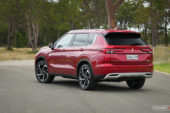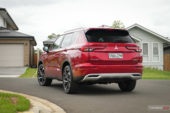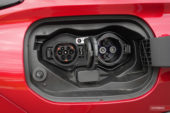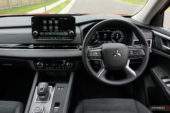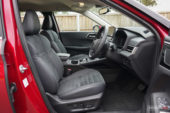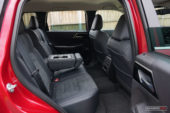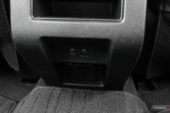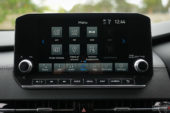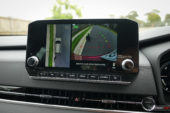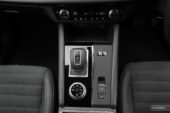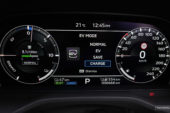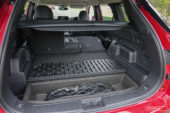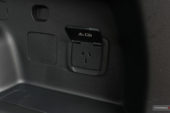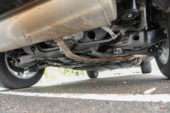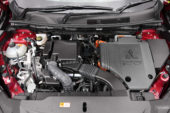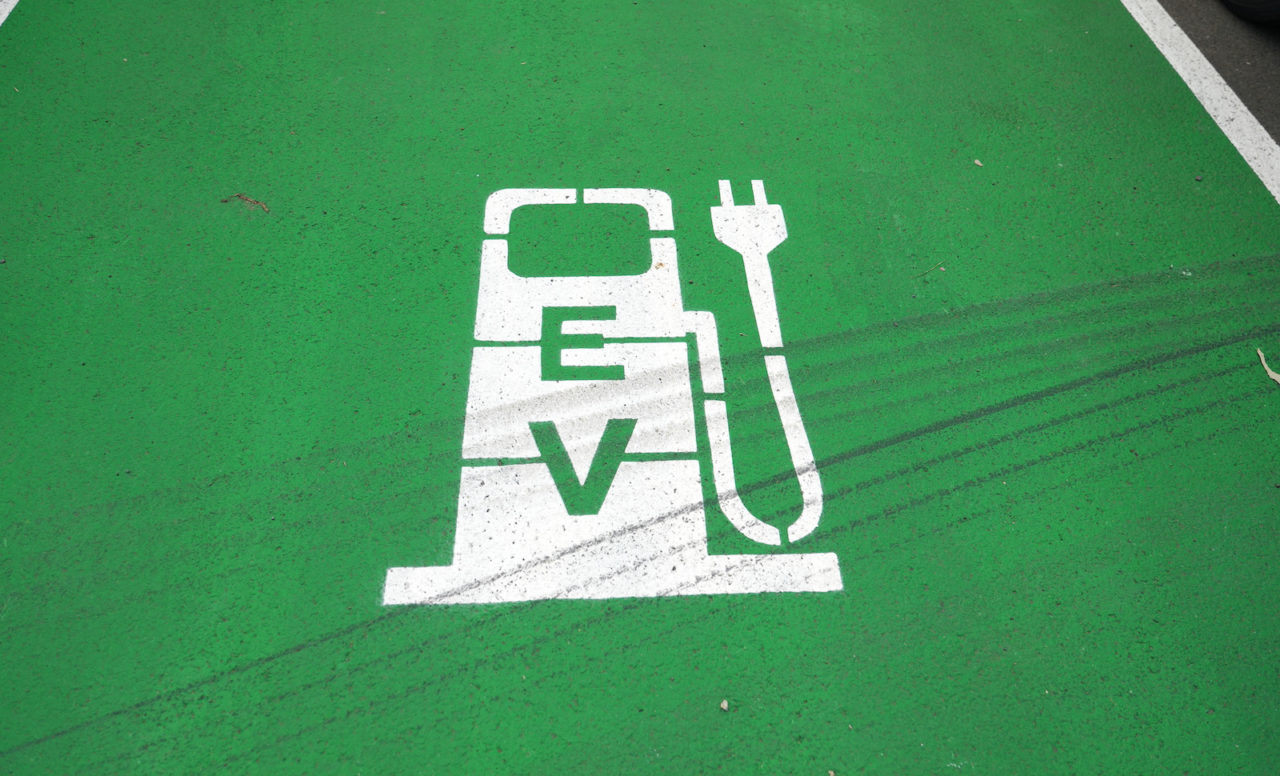Plug-in hybrid vehicles are on a steep upward trajectory here in Australia. VFACTS figures show sales have doubled from 2021 to 2022 alone. In early 2022, we saw the launch of the fourth-generation Mitsubishi Outlander. But it was launched without the PHEV offering that the previous generation Outlander boldly introduced. Thankfully for the Mitsubishi sales department, a new PHEV has now arrived with more power, more electric range, more features, and that bold new shape.
With the improved PHEV powertrain, the fully electric driving range has increased by 54 per cent to 84km, thanks to a larger 20kWh battery capacity. The petrol tank has also increased to 56 litres enabling you to travel greater distances between refuels or recharges.
The Outlander lineup is comprehensive, with five variants to choose from; the ES, LS, Aspire, Exceed and Exceed Tourer. Mitsubishi is kind enough to offer the PHEV setup in all variants but the LS. Prices begin at $56,490 for the ES PHEV ES and peak at $70,990 for the Exceed Tourer PHEV. Here, we’re testing the ES and Aspire PHEVs, spending one week in each. The Aspire PHEV retails from $62,990. If plug-in hybrids are not your type, the base model Outlander ES sells from $37,240 (all excluding on-road costs).
2023 Mitsubishi Outlander PHEV Aspire – THE SPECS
[column width=”47%” padding=”6%”]Engine: 2.4-litre four-cylinder plug-in hybrid
Output (combined): 185kW / 450Nm
Transmission: Multi-mode one-speed auto
Drive type: All-wheel drive
Wheels: F & R: 20×8.0, 255/45
ANCAP: Five stars
Tare weight: 2045kg
Power-to-weight: 11.05:1 (kg:kW)
Official fuel economy: 1.5L/100km
Economy during test: 6.5L/100km
Fuel capacity/Type: 56L/91 RON[/column] [column width=”47%” padding=”0″]Power efficiency: 123.33kW:L/100km
0-60km/h: 3.63 seconds*
0-100km/h: 7.05 seconds*
60-110km/h: 5.15 seconds*
1/4 mile: 15.81 seconds at 136.8km/h*
Max acceleration: 0.746g*
100-0km/h braking: 3.26 seconds at 40.89 metres*
Max deceleration: -1.244g*
Decibel at idle (on standby): 27*
Peak decibel at 60-100km/h: 81*
Priced from: $62,990[/column][end_columns]
* Figures as tested by PerformanceDrive on the day. Factory claims may be different
2023 Mitsubishi Outlander PHEV – ES and Aspire – THE PACKAGE
Mitsubishi has gone bold with its futuristic and eccentric external design. From the front, its waistline and lighting sit high to give off a powerful and prominent look. A bit like Land Rover’s design philosophy. The bonnet sits tall, and the puffed-out bumper is exaggerated by chunky chrome sections and a glossy black grille.
The mid-section’s design is a little more normalised, but disproportionate to the front as the bonnet line rises taller than the door line. At the rear, the design is more sharply styled with elegance in mind, thanks to its wide and linear taillights, and less bulged-out flair than the front end. In fact, the front and rear styling is rather disjointed – almost like two different cars.
Now larger in every dimension, the Outlander is 15mm longer, 52mm wider, 30mm taller, and has a 36mm longer wheelbase than the previous generation. This gives extra space inside, especially for the third-row seating available in the Exceed and Exceed Tourer only. Though, third-row legroom is still negligible and more accommodating to kids or short trips. In the front and second rows, legroom and headroom is copious. Bonus points are rewarded for the second row being on rails, which enables you to adjust the size of the space where you need it most. However, the second row doesn’t fold flat, making long items passing through the rows restrictive. Thankfully, rear air vents in the second row are now included.
When the first and second rows are in use, boot space has grown from 463 litres to 494 litres. But due to extra room required for the larger capacity batteries, boot space is reduced from 1602 litres to 1414 litres over the previous generation when the second and third rows are folded down.
Given we tested the two lower variants in the PHEV range, interior presentation is not the best the Outlander has to offer. There are some hard plastics about, but the diamond-cut, brushed metal-look knobs, and the air vents that morph into the design of the dash look modern. The indicator stalks need some refinement as they make a flimsy plastic clicking sound when moved, and a poignant interior glue smell that we remember from our last Outlander review has not changed. We’re not fans of the Outlander’s on-screen menu, either. The blocky font and plain layouts lack visual appeal. The rear-view camera also produces terrible picture quality at night.
The best aspect of the interior is practicality and the amount of storage holes scattered throughout. You get a generous area forward of the gear shifter, drive tunnel lower shelves for the driver and front passenger, and large door pockets and bottle holders. New three-section seat pockets on the back of the front seats are also a handy addition.
No matter which Outlander PHEV you choose, a vast list of features come standard. Standouts include blind-spot sensors, forward and reverse collision mitigation with pedestrian avoidance, rear cross-traffic alert, distance-controlled cruise control, front and rear LED lights, lane departure warning with passive steer assistance, active lane-keeping aid, road sign recognition, front and rear parking sensors, a six-speaker sound system with Android Auto, wireless Apple CarPlay and built-in sat-nav, a 12.3-inch digital instrument cluster and 9.0-inch centre touch-screen, and two-zone climate control.
If you upgrade to the PHEV Aspire, you gain a head-up display, an electro-chromatic rear view mirror, auto headlights with auto levelling, programmable charge scheduling, remote keyless entry, two 240-volt 1500-watt power outlets, a powered tailgate, a cargo cover, smartphone wireless charging, two USB ports in the second row, roof rails, privacy glass, fog lights, heated front seats and door mirrors, an upgrade from fabric to micro-suede seats with synthetic leather side bolsters, a leather steering wheel, powered driver seat adjustments, and alloy wheels that grow from 18 to 20 inches. Quite a lot for $6500 more.
An appalling miss for all Outlander PHEVs is the lack of a spare wheel. Not even a space-saving spare. For an SUV that is marketed for adventures off the bitumen, and with off-road driving modes to choose from, we think this is pretty poor form. If manufacturers want PHEVs to be just as practical as their fossil fuel counterparts, they need to offer the same capabilities and long-distance support.
Mitsubishi now gives all models a five-year, 100,000km warranty. But it can be extended to an industry leading 10-years and 200,000km if the vehicle is serviced at Mitsubishi service centres in accordance with the servicing schedule. This excludes the drive battery, which ends at eight years. Complimentary roadside assistance is also offered for four years. Servicing is required every 15,000km or 12 months, and capped-price servicing is available for ten services.
2023 Mitsubishi Outlander PHEV – ES and Aspire – THE DRIVE
All too often hybrids were seen to be an economical alternative at the cost of grunt. With the latest Outlander PHEV, you actually gain huge amounts of power over the conventional engine. Joining forces is a 2.4L naturally aspirated four-cylinder petrol that produces 98kW – 4kW more than the previous gen PHEV – and two electric motors powering the front and rear wheels separately. Power from the front motor increases from 60kW to 85kW, and 70kW to 100kW f0r the rear motor. This surges the overall combined output to an awe-inspiring 185kW and 450Nm.
On the road, these outputs translate to a 0-100km/h time of just 7.05 seconds, according to our Vbox tests. We were not expecting this much get-up. Thanks to that instant torque and acceleration, keeping up with pushy traffic, tackling a steep hill, or overtaking is an effortless event. It’s loads more capable than the conventional petrol engine model. It feels like it never needs to be pushed hard because taking off in an unhurried fashion happens quickly and naturally.
The electric motors are powered by 20kWh worth of lithium-ion batteries – up from 13.8kWh. In other words, the Outlander PHEV can now travel about 84km on electric juice alone. The batteries charge either by plugging into a charger, using the petrol engine, from braking energy, or using all methods. Charging from zero to 80 per cent via DC rapid charging takes 38 minutes. From zero to 100 per cent, a 3-phase 240-volt power outlet takes 6.5 hours, and a standard 240-volt outlet takes about 9.5 hours.
New for this generation PHEV is V2X capability. This allows energy stored in the Outlander’s batteries to be discharged back into external sources, or into an off-grid home like a mobile energy store. The Aspire and above are also fitted with vehicle-to-load capability, with two 240-volt AC three-pin power points that can provide up to 1500 Watts for domestic appliances – no need to haul that hefty generator on your next camping trip.
The all-important fuel consumption average has dropped from 1.9 to 1.5L/100km. Don’t take much notice of this figure because the ADR 81/02 standard is based on the engine running for only 20 minutes, and when the batteries are fully charged. Of course, you cannot travel 84km in 20 minutes, which is the distance you will start to rely on the petrol side more heavily and see fuel consumption rise. However, if you plan to recharge every 84km, your fuel consumption average can be zero. We drove the two Outlander PHEVs under one full charge and one tankful of petrol were depleted (or about 800km), and our average consumption was 6.5L/100km. You will see your consumption decrease the more often you charge it.
There is flexibility to have the engine charge the batteries while driving, or you can set it to hold the battery charge until you choose to use it. For example, you might want to hold the charge until you are driving at slower speeds – electric range will go further at slower speeds than when travelling at freeway speeds. There are also no less than seven drive modes to choose from, which emphasises the Outlander’s intention for Aussie adventures.
Although it is slowly improving, the electric charging network is still premature in Australia. For instance, charging station locations and quantities are lacking, there is still no government requirement for new multi-storey blocks to include charging stations in them, and there is no mechanism for renters to get chargers installed at their renting properties. And about 31 per cent of Aussies rent.
As mentioned in our earlier Outlander reviews, the suspension is much too soft and unsupportive for our liking. Tackling speed humps requires slower speeds so you don’t launch your passengers off their seats. You’d think that having soft suspension makes the ride more pleasant. Not here, in our opinion. The suspension simply bottoms out instead. It also makes cornering sloppy and sudden turns more exaggerated, as the suspension does not absorb the weight shift proficiently in our view. For general driving around town it isn’t too bad.
2023 Mitsubishi Outlander PHEV Aspire – THE VIDEO
2023 Mitsubishi Outlander PHEV – ES and Aspire – THE VERDICT
The Mitsubishi Outlander has always been a budget-friendly family SUV for those looking for practicality over and above anything else. But in PHEV format, the price tag creeps up into the premium space. That increased initial outlay is worth it if you are able to charge your Outlander regularly. If you can charge every 84km, your petrol bill could virtually be zero, justifying the premium cost. But if you don’t have access to a charger regularly, your resulting fuel consumption will be similar to a conventional petrol Outlander that is roughly $19k cheaper.
We appreciate the increased 84km all-electric range and the generous amounts of power and torque. But we dislike the soft suspension setup, the lack of seven seats available for all variants, minor refinement misses inside, and the lack of a spare wheel in an SUV marketed for adventures.
[column width=”47%” padding=”6%”]PROS:
– Market-leading PHEV capability and electric range
– Surprising amounts of power and performance
– PHEV tech provides good versatility; EV qualities without the anxiety
– Now offers more control over driving modes, comes with V2X and V2L capability
– Interior space[/column] [column width=”47%” padding=”0″]CONS:
– Fuel economy benefits only accessible via charging, otherwise similar to non-PHEV models
– Soft suspension means sloppy handling
– No spare wheel or even space-saver
– Some refinement shortcomings with interior and some features[/column][end_columns]
As always, if you’re thinking about buying a new car don’t forget to click here to speak with our car buying specialists.

